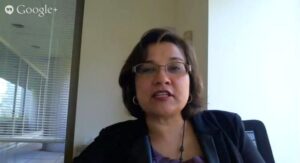#WorkTrends Recap: Quicker & Better: The Importance of Speed & Productivity in Recruitment
Today’s #WorkTrends show addressed the importance of speed and productivity in the recruiting process – a topic that is constantly relevant. In a tight labor
Today’s #WorkTrends show addressed the importance of speed and productivity in the recruiting process – a topic that is constantly relevant. In a tight labor
To stay competitive in 2016, your talent acquisition success will depend on a combination of effective recruitment marketing strategies, increased speed, and quality hiring processes.
“You can twist perceptions Reality won’t budge You can raise objections I will be the judge And the jury…” —Neil Peart (Rush, “Show Don’t Tell”)

“The end cannot justify the means, for the simple and obvious reason that the means employed determine the nature of the ends produced.” –Aldous Huxley
Mercy me, my MySpace experience is one I’ll never forget. It was my first foray into social media beyond simply blogging, online groups and forums
I played Patrick the recruiter in our customer conference general session skit. It was less than 15 lines and shouldn’t have been a problem. But
“And with all your magic I disappear from view…” —Coldplay She stopped in the middle of the hall and met my gaze. We shook hands.
“Half the world is Half the world was Half the world thinks While the other half does…” –Neil Peart (writer and musician, “Half the World”)
The balance of power is shifting in the employer/employee relationship. What does it mean for the future of work? The #TChat crowd weighs in
The balance of power is shifting in the employer/employee relationship. What does it mean for the future of work? The #TChat crowd weighs in

by Jeff Carr, President and CEO, PeopleFluent As organizations increasingly grasp the true value of their workforce and view employees as important business assets rather

Don’t miss the hot ticket at this year’s HR Tech Conference, as #TChat goes live with experts at a very special Employee Engagement Roundtable. Join the conversation October 7!

“Big data” is all the rage. But what does it really mean, and how can HR professionals apply if effectively for better business decisions? #TChat takes on the big questions about data…